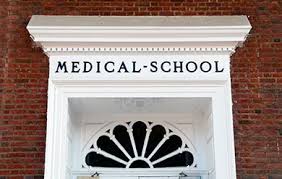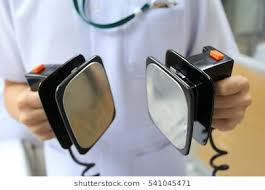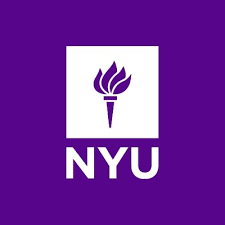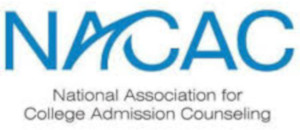Applicants to medical school are aware of two deadlines. For the purposes of this column we’ll call these deadlines “the early deadline” and “the late deadline.” Indeed, all information that follows is “truthful” if not “factual.” (You have a busy day, gentle reader, and I certainly have better things to do than to complete any actual research for this essay.) Now, then. Students in the first group, those applying earlier, are admitted in greater numbers than those who apply later. Again, to make things easy, let’s say that 20% of the “early” applicants are admitted to medical school while only 10% of the “late” applicants are granted that same opportunity.

Theresa, a junior at a university with a name that you would recognize, called this morning from the corner of Frenzy Avenue corner and Blind Panic Street. Theresa is taking a number of tough courses, some with names I could almost pronounce. “Nuclear Non-Euclidean Abstract Industrial Deconstruction” was one of the easy ones. As a result of her commitment to “Nuclear Non-Euclidean Abstract Industrial Deconstruction” she is unable to attend to studying for the MCAT. Apparently “Nuclear Non-Euclidean Abstract Industrial Deconstruction” requires more cognitive firepower than I had expended in four years of undergraduate study. Good for her.
Theresa’s screaming anxiety was precipitated by her need—biological apparently—to sleep dozens of minutes each night: Theresa couldn’t maintain her straight A average in college AND prepare effectively for the MCAT. She was concerned therefore about missing the early deadline and the attendant arithmetic advantage of being part of the early applicant group. What to do? Should she apply as part of the late group? Would her odds of being admitted to medical school drop to 10% from 20%? Theresa is a juggernaut when it come to studying, a studying machine. When the semester ends, she will be able to devote infinite hours to studying for the MCAT. If she applies as part of the late group, her MCAT score will be better. But will her odds be worse?

To help Theresa understand the path forward, I asked her to choose a Hospital for an imagined family member. I gave her the following data about the two hospitals. A thousand patients are admitted to Hospital A. Two-hundred-thirty-nine of them die. A thousand patients are admitted to Hospital B. Four of them die. Which is the better hospital? (The following graphic may serve to make the question more clear.)
Hospital A Hospital B
1000 patients admitted 1000 patients admitted
239 die 4 die
Theresa suggested that Hospital B is the better hospital. After all, four is a smaller number than 239. Wouldn’t you want your loved one to be admitted to the hospital where fewer people die?

Not necessarily. Because you can’t talk about who comes out of your study unless and until you know who went in. What if Hospital A works with survivors of car crashes, construction accidents, and victims of shootings? What if Hospital B only does cosmetic surgery, tummy tucks, Botox injections, and face lifts? If Theresa’s loved one has a life threatening issue, Hospital A is the place to be. Hospital A has experience dealing with patients on the verge of shuffling off. Hospital A has trained trauma surgeons, packets of whole blood, defibrillators, and morphine. Hospital B can only help you look pretty.

Walking in to Hospital B doesn’t make you typical of the population of Hospital B any more than my putting on a Miami Dolphins uniform makes me a functioning member of that class of enormous humans. Specifically, were I to suit up as a Dolphin this Sunday against the Jaguars, how do you think this 62-year-old, balding, paunchy, 178-pound man would do? You and I both know I would be lucky to be carried off the field on a stretcher after one play. It is more likely that the remains of my corporeal being would be removed from the gridiron in a bucket. Putting on a Dolphin uniform doesn’t make me a Dolphin. Applying in the early group of medical school applicants doesn’t make Theresa a member of that group. It’s better to attain the abilities of the preferred group—by studying for example—than to jump in believing that participation makes you real.

Which brings us back to the question: why do earlier applicants get admitted at 20% and later applicants at 10%? I haven’t seen the data, but I’ll make a guess: the populations are different. Maybe earlier applicants are smarter, are more motivated, have better grades, have higher MCAT scores, are more organized, can spell “Constantinople,” or have bigger feet. There’s something different about them. That’s why more of them get admitted.
Here’s how NYU explains their early decision policy for undergraduate admissions:
“Is it easier to get in with early decision?
Our admission standards for both early decision and regular decision are the same. The number of applicants and admit rates, however, may differ each year between our different rounds of admission. For the Class of 2021, our overall admit rate was roughly 28% while early decision candidates were admitted at a rate of roughly 38%.”

The admissions standards at NYU are the same for both early decision and regular decision applicants. Pretty clear. Same for med school. Same for professional football. The date of the application is less important than the ability of the applicant.
I wish Theresa every success with her “Nuclear Non-Euclidean Abstract Industrial Deconstruction” course; I know she’ll study hard for and do well on the MCAT. I think she’ll be a fine doctor. In the meantime, I hope she can spend as little time as possible on the corner of Frenzy Avenue and Blind Panic Street.



3 thoughts on “Is There a Doctor in the House?”
David, I know very little about medical school,admissions. Perhaps NYU is telling the truth about having simimlar credentials from both early ad later admits, but I don’t think that is the case for undergraduate admissions, although all the colleges parrot the same line. In fact, and I think you know this, applying earlybto almost any college except Georgetown, conveys a significant advantage IF the applicant is very competitive. It doesn’t help the non-competitive at all, of course.
Why is this!? Sure, the pool is stronger overall, as you surmise for the medical school applicants, and, yes, this is where athletes, legacies, and other hooked groups can more easily receive their due. But, for some, just the fact of applying early and sounding committed to and well informed about the school can help a good deal. This doesn’t apply in medical school admissions because there is no binding commitment or even an implied one, and the applicant doesn’t have to explain why they like a certain school either.
I have seen this happen far too often — I am not commenting on the fairness of this — and I would stake my 34 years of admissions and counseling experience on it.
Point taken, old friend. (And for first-time readers may I point out that there is no one more knowledgable, competent, or ethical than my colleague and fellow author, Jon Reider) Demonstrated interest is a hot topic this past decade. Some counselors argue that demonstrated interest is a euphemism for full-pay applicants. Some counselors suggest that demonstrated interest implies students who will yield–show up. My point is that the reality of ability trumps the indicia of ability. Being a competent student is more important than the observed deadline.
I have loved your column and continue to read it though I’m retired. I need to tell you, however, the way the Dolphins are playing ,don’t be so sure they couldn’t use you.
Debbi